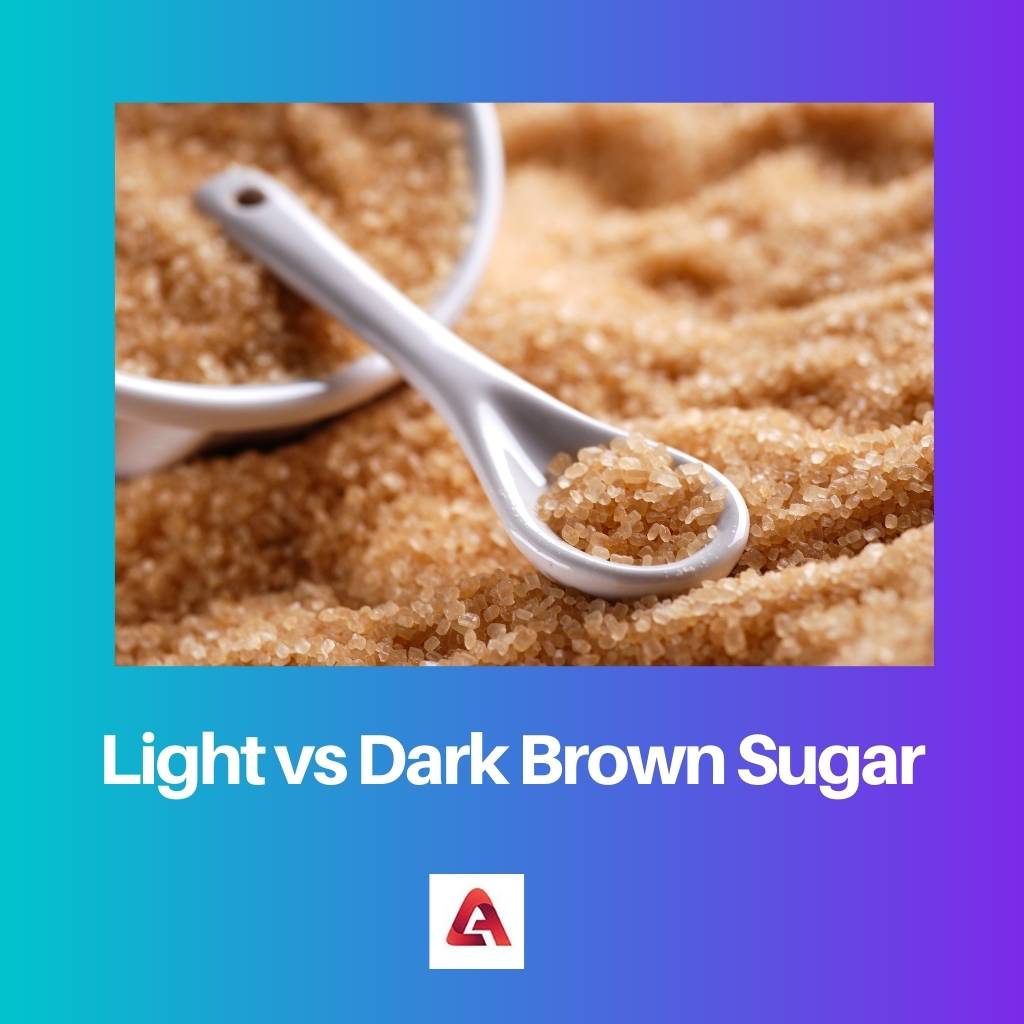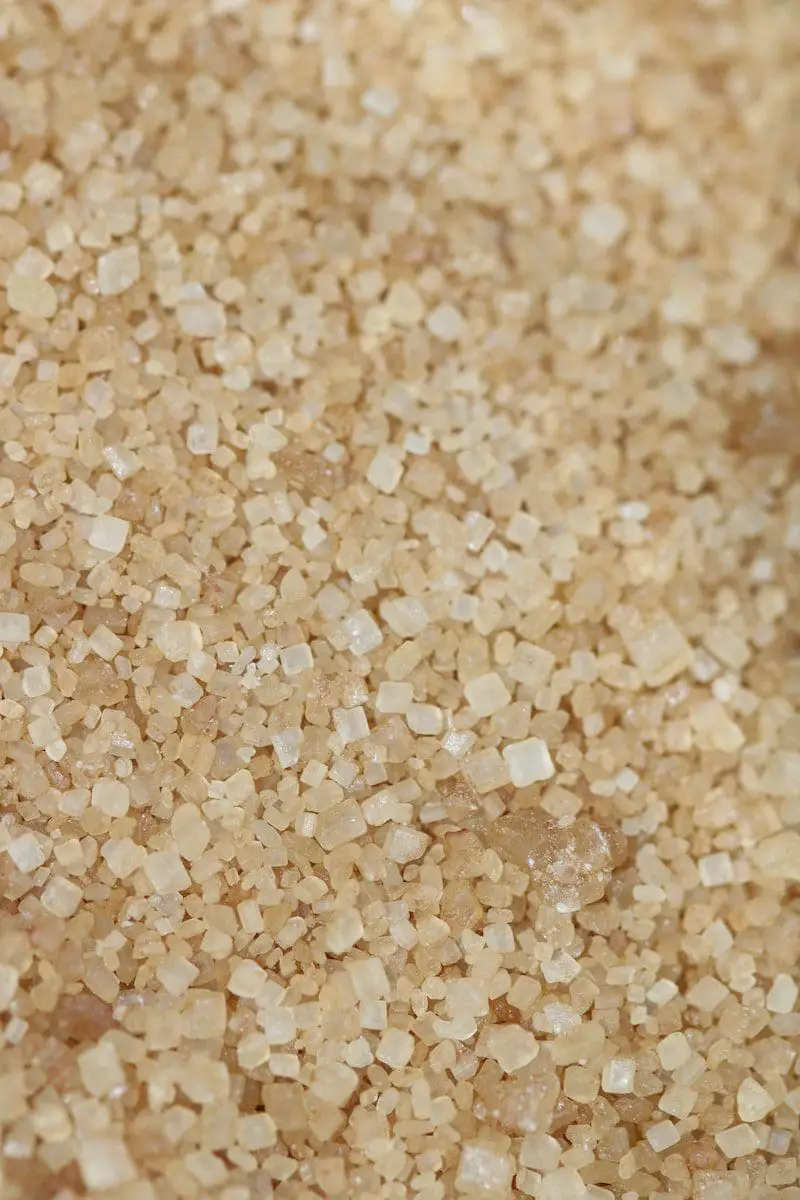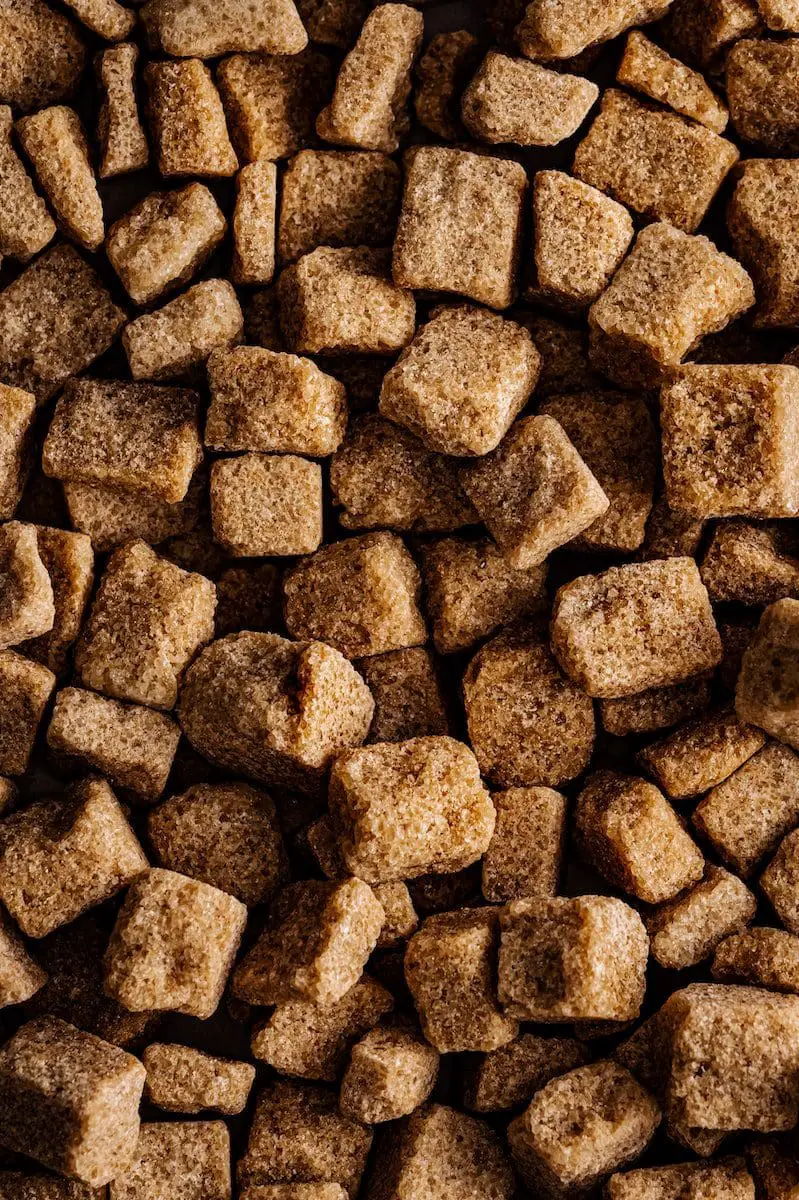Sweets are an important part of human life. No matter what the occasion is, it will never be fulfilled without sweets. Some sweets require different types of sugar than normal white sugar.
According to the requirements of the food, light brown sugar and dark brown sugar are used for making the sweet.
Key Takeaways
- Dark brown sugar contains more molasses than light brown sugar, resulting in a more profound color and stronger flavor.
- Light brown sugar provides a milder taste and lighter hue, making it suitable for baked goods with a subtle sweetness.
- Both types of brown sugar can be used interchangeably in recipes, but the choice depends on desired taste and appearance.
Light vs Dark Brown Sugar
The difference between Light and Dark Brown Sugar is that in Light Brown Sugar, the molasses content that is required to make the sugar involved is 3.5%. But the molasses content that is required to make the dark brown sugar is 6.5%. The color of the light brown sugar will sometimes be yellow. The color of the dark brown sugar is very dark.

Light Brown Sugar is a sugar used in many food items because of the richness and the taste it provides. But it does not have any health benefits in the sugar content. It is made from a mixture of molasses which is not that good for health.
The only use of this sugar is it acts as an artificial sweetener in many food items, apart from that, it is not advisable to eat or should not be included in our diet.
Dark Brown sugar is not good for health because of the molasses content in it. When you compare this dark brown sugar with white sugar, which is used in preparing food items, it will not make you gain more weight.
Because the calories in dark brown sugar are less when we compare it with the calories in white sugar, it is not advisable to use it in your daily diet because of the calorie count. You should use only in a limit.
Comparison Table
| Parameters of Comparison | Light Brown Sugar | Dark Brown Sugar |
|---|---|---|
| Molasses | 3.5% | 6.5% |
| Color | Mild Yellow | Dark in color |
| Health benefits | Not good for health | Not good for health |
| Vitamins and Minerals content | It does not have any vitamins and mineral values. | It lacks vitamin and mineral content. |
| Usage | Less | High |
What is Light Brown Sugar?
Light Brown Sugar is a type of sugar that contains less white sugar mixed in it. It contains white sugar and a mixture of molasses mixed in it. We can even make light brown sugar in our home instead of buying it from the shops.
If you have the right amount of ingredients, then you can make it in your home. Sometimes the light brown sugar will look similar to the yellow sugar.
Most people use this because it will add more flavour to the food we cook. But it doesn’t have any health benefits because of the artificial flavours and other ingredients added to make it.
It does not have any minerals or nutrients, so eating it will not have any health benefits for our bodies. It is not advisable to take more brown sugar in your diet as it will damage your health, and your teeth will become less flexible.
Any sugar in the market is not at all good for human health. They don’t have any health benefits for the human body.
They are all made from Jaggery. But, instead of using jaggery in the full amount, they use only 10% of that. And the rest will be dispersed as waste.

What is Dark Brown Sugar?
Dark Brown Sugar is a type of sugar used in all sweet recipes to enhance the richness and taste. If you want to enhance the molasses content in your food, then this type of sugar is used.
It is used in many cakes, bread, and waffles. Adding normal sugar to these food items will not give any taste to the food we are making. Only dark brown sugars will enhance the taste.
This is not good for health because compared to the other sugars in the market, the molasses content in this sugar is high. It has a very high molasses content of 6.5%.
It is not advisable to use it in our daily food items where sweet is a necessary item. If you want to replace it with some other food item, then you can use many natural items like Jaggery, honey, and maple syrup for the food items you are cooking.
These will not only act as a replacement but will also help us to maintain good health. It contains some minerals and nutrients, but that does not mean that it will help you in the long run.
The content in these food items is very less compared to the other healthier items available in the market.

Main Differences Between Light and Dark Brown Sugar
- Light brown sugar contains very little amount of molasses. On the other hand, dark brown sugar contains a large amount of molasses, so when we compare light brown sugar is less healthy than dark brown sugar.
- The molasses content that is involved in the making of light brown sugar is 3.5 %. But the molasses content that is involved in making dark brown sugar is 6.5%.
- The color of the light brown sugar will be mild yellow color. The color of dark brown sugar is very dark color.
- Light brown sugar is not used in all types of sweet recipes. Dark brown sugar is used in all types of cakes and waffles to enhance the richness and taste.
- If we use light brown sugar in the cookies, we make the color will be light. But if we use dark brown sugar in the cookies, we make the color will be darker.

- https://link.springer.com/article/10.1007/s13197-019-04196-5
- https://onlinelibrary.wiley.com/doi/abs/10.1002/fsn3.1803

Both light and dark brown sugar offer unique flavors and functions in cooking and baking. Understanding their roles in recipes is integral to crafting exceptional culinary creations.
Well said. The distinct characteristics of different sugar varieties make them essential ingredients that contribute to the depth and complexity of flavors in various dishes.
Absolutely. Sugar plays a critical role in the chemistry of baking and is an indispensable element in achieving desired textures and flavors.
This article offers valuable insights into the differences between light and dark brown sugar. When choosing sweeteners for baking or cooking, it’s essential to consider how their flavor and color will affect the final dish.
Absolutely. The nuances of sugar varieties can significantly impact the taste and appearance of a recipe, making the choice between light and dark brown sugar an important culinary decision.
The potential health implications associated with different types of sugar invite contemplation about dietary habits. This article serves as a thought-provoking resource for the discerning consumer.
Absolutely. The critical exploration of sugar composition and its effects on the body fosters a deeper understanding of the role and impact of sweeteners in our daily lives.
Emerging research shows that dark brown sugar may have more health benefits than white sugar, such as a lower glycemic index. Both types of sugar are similar in calories and nutrition content, but using them in moderation is important for maintaining a balanced diet.
I agree with you. It’s important to be aware of the glycemic index and nutritional content of sugars to make informed decisions about diet and health.
The comparison table effectively captures the essential differences and shared attributes of light and dark brown sugar. This data provides valuable information for individuals interested in the culinary and nutritional aspects of sugar use.
Absolutely. Tables and visual representations are compelling tools for understanding complex information, making it easier to appreciate the nuances of sugar varieties.
The discussion about health implications helps to raise awareness about the consumption of brown sugar and its impact on the body. Moderation and alternative sweeteners are valuable considerations for maintaining a healthy diet.
I completely agree. Understanding the calorie content and nutritional profiles of different sugars is essential for individuals seeking to make informed dietary choices.
The discussion of the composition and nutritional impact of brown sugar sheds light on the complexities of sugar varieties. Such insights are tremendously valuable for those seeking to broaden their knowledge about food and health.
The information about light and dark brown sugar is enlightening, particularly regarding their effects on health and diet. Understanding the nuances of sugars is essential for making informed choices in food consumption.
Absolutely. The recognition of sugar complexity and its implications for health equips individuals to make well-informed decisions about culinary and dietary practices.
Well articulated. This article not only deepens our understanding of sugar types but also prompts deliberate considerations about how we approach dietary intake and sweetener choices.
The detailed comparison provided here illustrates the significance of molasses content in differentiating between light and dark brown sugar. Understanding how these sugars function in recipes is essential for achieving desired flavors and textures.
Indeed. Recognizing the roles of molasses and color in sugar varieties is crucial to the art and science of baking and cooking.
Absolutely, I appreciate the precision of the information shared here. It’s enlightening to learn about the factors that inform sugar choices in the culinary realm.
The comprehensive overview of light and dark brown sugar presents an insightful understanding of how these varieties interact with different foods. It broadens our culinary knowledge and encourages prudent usage of sweeteners.
Indeed. This article underscores the importance of balancing flavor, color, and nutritional considerations when selecting sugar for cooking and baking.
Absolutely. It’s fascinating to dive into the intricacies of sugar varieties and their influence on the sensory experience and nutritional aspects of food preparation.